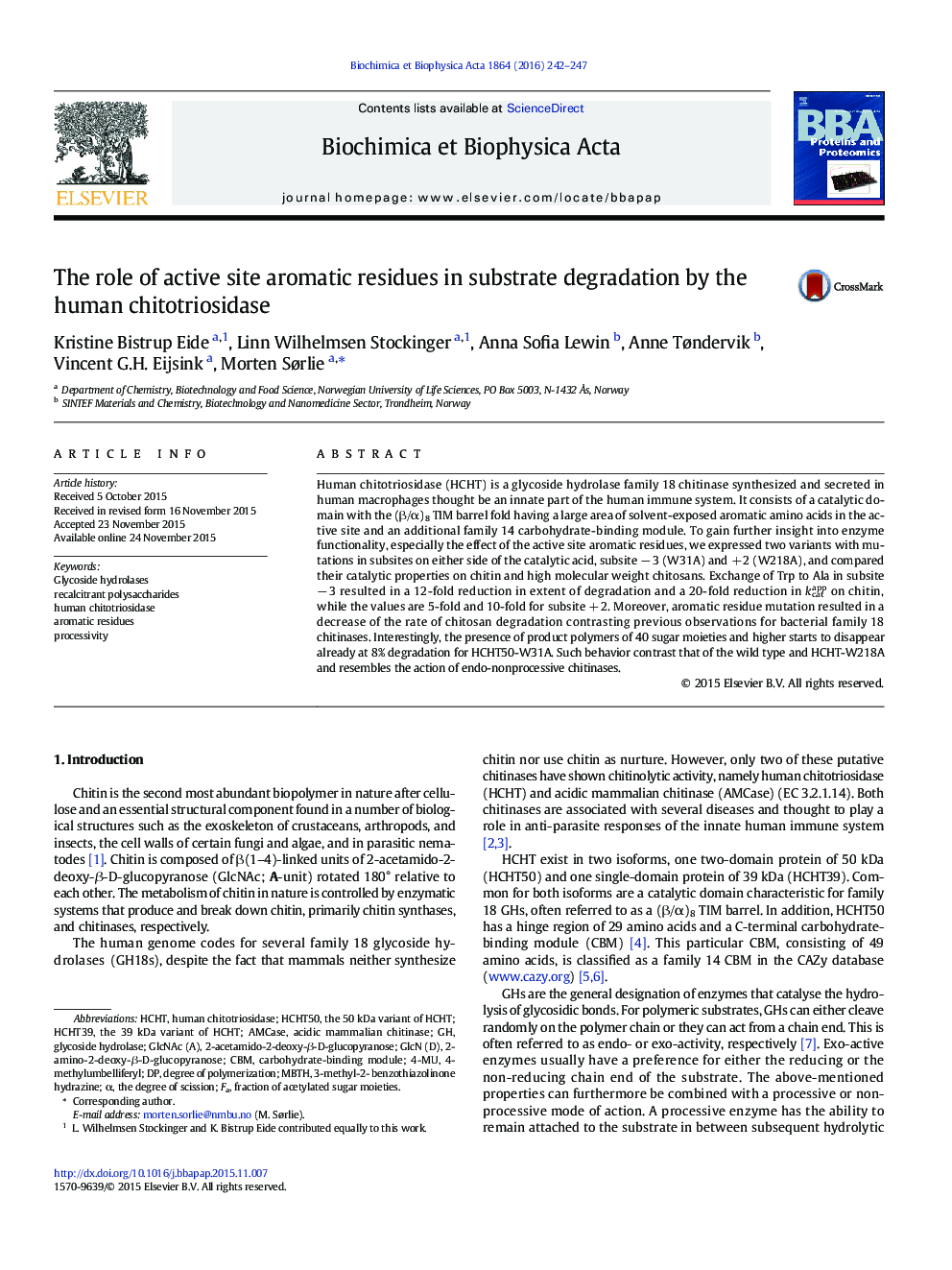| Article ID | Journal | Published Year | Pages | File Type |
|---|---|---|---|---|
| 1177723 | Biochimica et Biophysica Acta (BBA) - Proteins and Proteomics | 2016 | 6 Pages |
•Human chitotriosidase (HCHT) activity depend on surface exposed aromatic residues•Processive ability, catalytic efficiency on insoluble substrates may not be connected•HCHT50 shows atypical properties relative to bacterial enzymes
Human chitotriosidase (HCHT) is a glycoside hydrolase family 18 chitinase synthesized and secreted in human macrophages thought be an innate part of the human immune system. It consists of a catalytic domain with the (β/α)8 TIM barrel fold having a large area of solvent-exposed aromatic amino acids in the active site and an additional family 14 carbohydrate-binding module. To gain further insight into enzyme functionality, especially the effect of the active site aromatic residues, we expressed two variants with mutations in subsites on either side of the catalytic acid, subsite − 3 (W31A) and + 2 (W218A), and compared their catalytic properties on chitin and high molecular weight chitosans. Exchange of Trp to Ala in subsite − 3 resulted in a 12-fold reduction in extent of degradation and a 20-fold reduction in kcatapp on chitin, while the values are 5-fold and 10-fold for subsite + 2. Moreover, aromatic residue mutation resulted in a decrease of the rate of chitosan degradation contrasting previous observations for bacterial family 18 chitinases. Interestingly, the presence of product polymers of 40 sugar moieties and higher starts to disappear already at 8% degradation for HCHT50-W31A. Such behavior contrast that of the wild type and HCHT-W218A and resembles the action of endo-nonprocessive chitinases.
